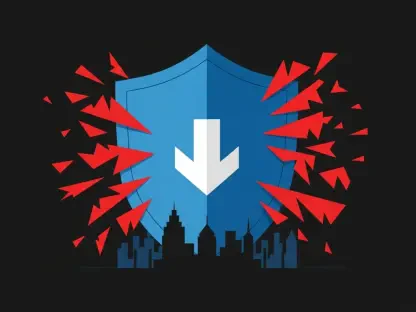I’m thrilled to sit down with Simon Glairy, a renowned expert in insurance and Insurtech, whose deep knowledge of risk management and AI-driven risk assessment offers invaluable insights into the evolving landscape of cyber threats. Today, we’re diving into the recent ransomware attack on the Nevada Division of Insurance website, exploring its impact on operations, the broader implications for state systems, and the growing trend of cyberattacks targeting the insurance industry. Our conversation will touch on the immediate response to the incident, the security measures being implemented, and what this means for the future of data protection in this sector.
Can you walk us through what happened with the ransomware attack on the Nevada Division of Insurance website and when it was first detected?
Thanks for having me, Olivia. The ransomware attack on the Nevada Division of Insurance website was first identified on August 24. From what’s been reported, it was a significant incident that forced the immediate shutdown of the website and several other state agency systems to contain the threat. The Office of Emergency Management acted swiftly to isolate the affected systems, but it’s clear this was a sophisticated attack, with some data already moved outside the state’s network. The full scope is still under investigation, but it’s a stark reminder of how vulnerable critical infrastructure can be.
How has this attack disrupted the day-to-day operations at the Nevada Division of Insurance?
The impact on operations has been notable. While limited services are still available, there are definitely hiccups. Third-party licensing and company processes haven’t been affected, which is a relief, but there are delays in other areas like intake processes. For now, they’re managing with workarounds—product compliance filings can still go through the electronic system known as SERFF, and consumers can submit paper complaints in person at offices in Carson City and Las Vegas. It’s not ideal, but it keeps some functionality intact while they work on recovery.
What can you tell us about the broader impact on other state agency systems that were taken offline due to this incident?
This wasn’t just an isolated hit on the Insurance Division. Several other state agency systems were also taken offline as a precaution to prevent further spread of the ransomware. While specific details on which agencies were affected haven’t been fully disclosed, it’s clear that this was a coordinated effort to protect the state’s network. As for when these systems might come back online, restoration is happening in phases, but no firm timeline has been shared yet. Security is the priority before anything is brought back up.
There’s concern about data being compromised during this attack. What do we know so far about the kind of information that might have been exposed?
That’s a critical concern, and right now, the details are still emerging. It’s been confirmed that some data was moved outside the state’s network, but the exact nature of that data hasn’t been fully determined. Investigators are working to figure out if personal information was involved. If it turns out that sensitive data like personal identifiers was compromised, Nevada law requires the state to notify affected individuals. Until more is known, it’s a waiting game, but the potential risk to privacy is very real.
What steps are being taken to restore the systems and ensure they’re secure moving forward?
Restoration is a meticulous process. The teams are working in phases to bring systems back online, starting with isolating the threat and then rebuilding with enhanced security measures. Before anything is fully operational, they’re conducting thorough checks to ensure no residual vulnerabilities remain. Long-term, I expect we’ll see investments in stronger cybersecurity frameworks, possibly leveraging AI for threat detection and response. This incident is a wake-up call to prioritize prevention over reaction.
Critical programs like Medicaid and public employee benefits are tied to state systems. How are these holding up amidst the outage?
Fortunately, the Office of Emergency Management has reported that health programs like Medicaid and public employee benefits are still operational. Payments to providers are continuing without interruption, which is crucial. It seems they’ve managed to ring-fence these essential services from the broader outage, likely through backup systems or manual processes. Keeping these programs running smoothly is a testament to contingency planning, even in a crisis like this.
The insurance industry seems to be a prime target for cyberattacks lately. What do you think is driving this trend?
You’re absolutely right—the insurance industry is in the crosshairs. The reason is simple: data. Insurance companies and regulators hold vast amounts of sensitive information—Social Security numbers, health records, financial details—that’s incredibly valuable on the black market. Add to that the critical role they play in economies, and disrupting their operations can cause widespread chaos, making them attractive for ransomware demands. Recent incidents, not just in Nevada but across major insurers, show how cybercrime groups are using sophisticated tactics like social engineering to exploit human vulnerabilities alongside technical ones.
Looking ahead, what is your forecast for the future of cybersecurity in the insurance sector?
I think we’re at a turning point. Cybersecurity in the insurance sector will need to evolve rapidly to keep pace with increasingly sophisticated threats. We’ll likely see heavier reliance on AI and machine learning for real-time threat detection and predictive analytics to identify risks before they materialize. At the same time, there’s going to be a push for stronger regulatory frameworks and collaboration between public and private sectors to share intelligence on emerging threats. But it won’t be easy—cybercriminals are adaptive, and the industry will need to stay one step ahead. Ultimately, I believe we’ll see a cultural shift where cybersecurity isn’t just a tech issue but a core business priority.









